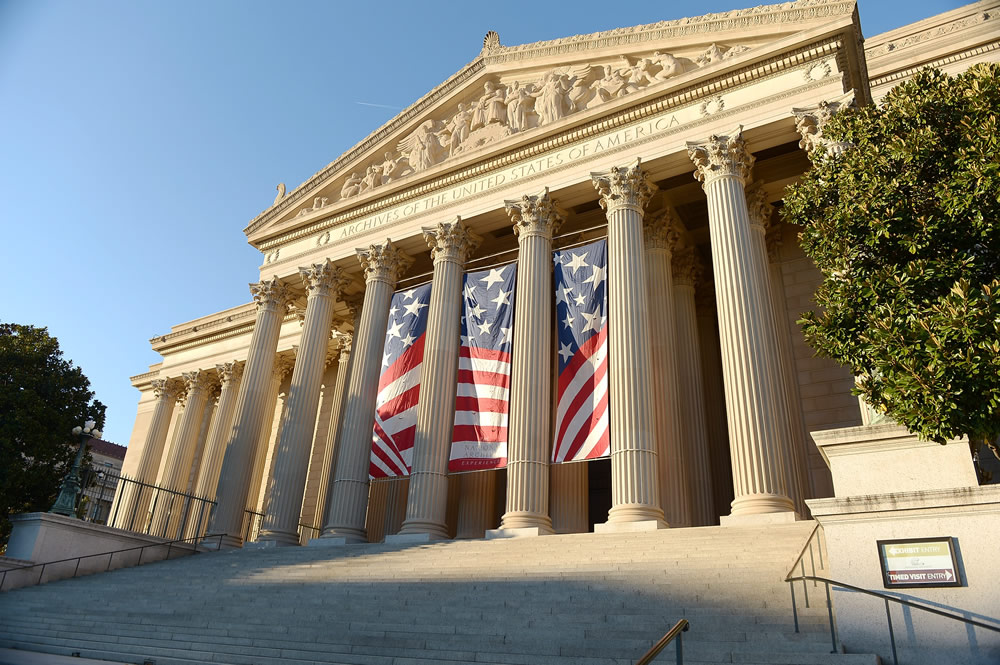The National Archives Building
Temple to American History
 The National Archives Building
The National Archives BuildingIn 1930, New York architect John Russell Pope was selected to design the National Archives Building in Washington, DC. The site chosen was halfway between the White House and Capitol Hill, and was the location of an historic farmers market.
Pope had the hard task of designing a building that was not only functional, but would also be a suitable home for the “Charters of Freedom” - the Declaration of Independence, the Constitution, and the Bill of Rights. Pope decided on a neoclassical design for the facade that paid homage to the Greek origins of democracy, and complemented other buildings along the National Mall.
In 1934, President Franklin D. Roosevelt signed legislation creating the National Archives as an independent agency. The building was officially opened in 1937, but did not receive the Declaration of Independence or the U.S. Constitution from the Library of Congress until 1952. The Bill of Rights came to the Archives upon opening in 1937. These documents are housed in the Rotunda, a structure built in homage to freedom and democracy. Apart from the Charters of Freedom, the Archives Building in downtown Washington holds more than 757,000 square feet of other federal records. The Archives quickly grew beyond the space of this single building, and has since expanded to dozens of facilities across the country.
During the 21st-century, the Archives building underwent major renovations of the Rotunda and the construction of the National Archives Museum which includes the Records of Rights exhibit in the David M. Rubenstein Gallery, special exhibits in the Lawrence F. O’Brien Gallery, the Boeing Learning Center, the William G. McGowan Theater for public programs.
Did you know?
The Archives has 72 Corinthian columns that are each 53 feet high, 5 feet 8 inches in diameter, and weigh 95 tons.The two bronze doors that guard the Constitution Avenue entrance each weigh 6½ tons and measure 38 feet 7 inches high, nearly 10 feet wide, and 11 inches thick. For a time they were the largest bronze doors in the world.
Only 2-5% of Federal documents in any given year are deemed historically valuable and preserved by the National Archives and Records Administration.
Additional resources
- The National Archives Building: Temple of American History by Patty Reinert Mason.
- The National Archives in Washington, DC

